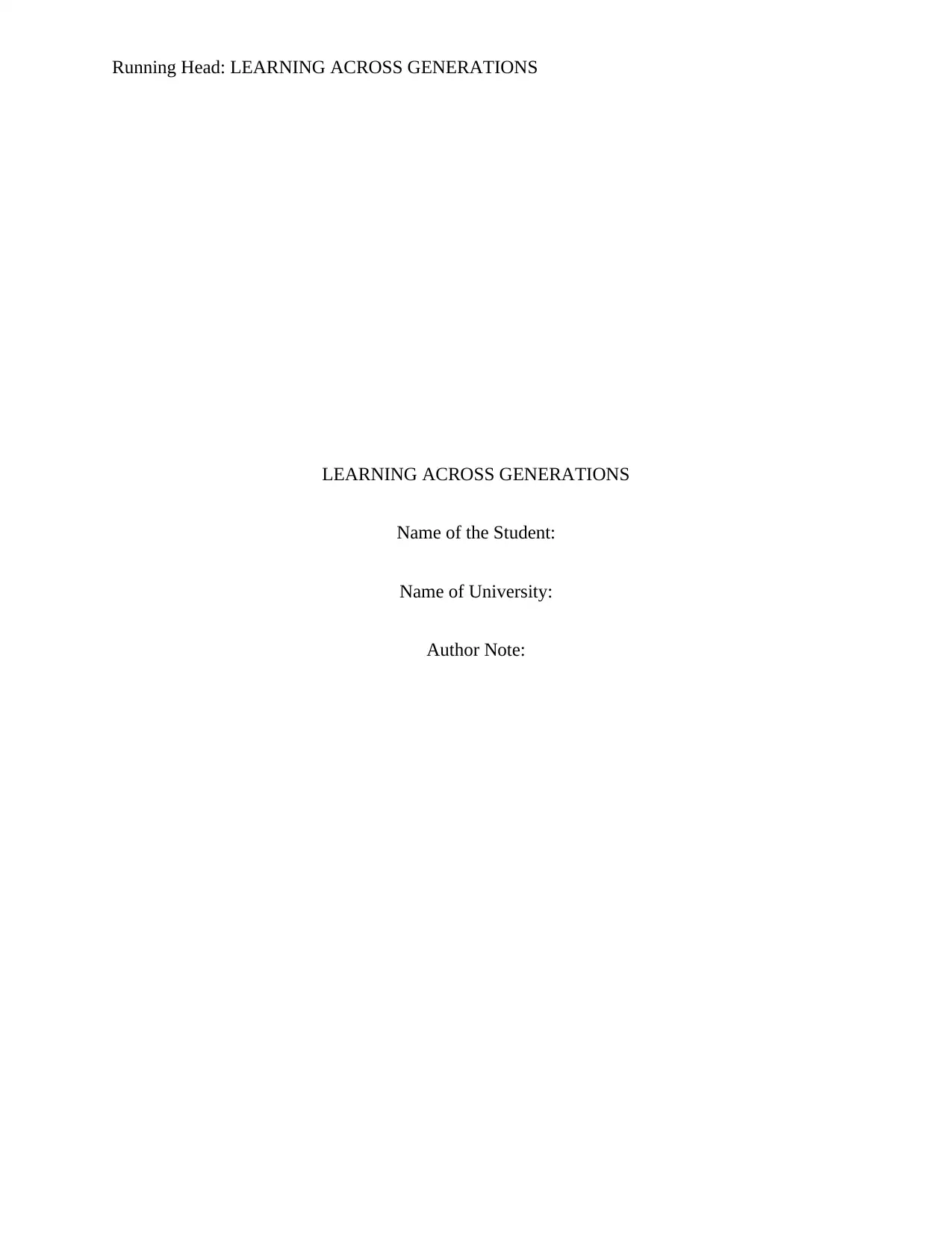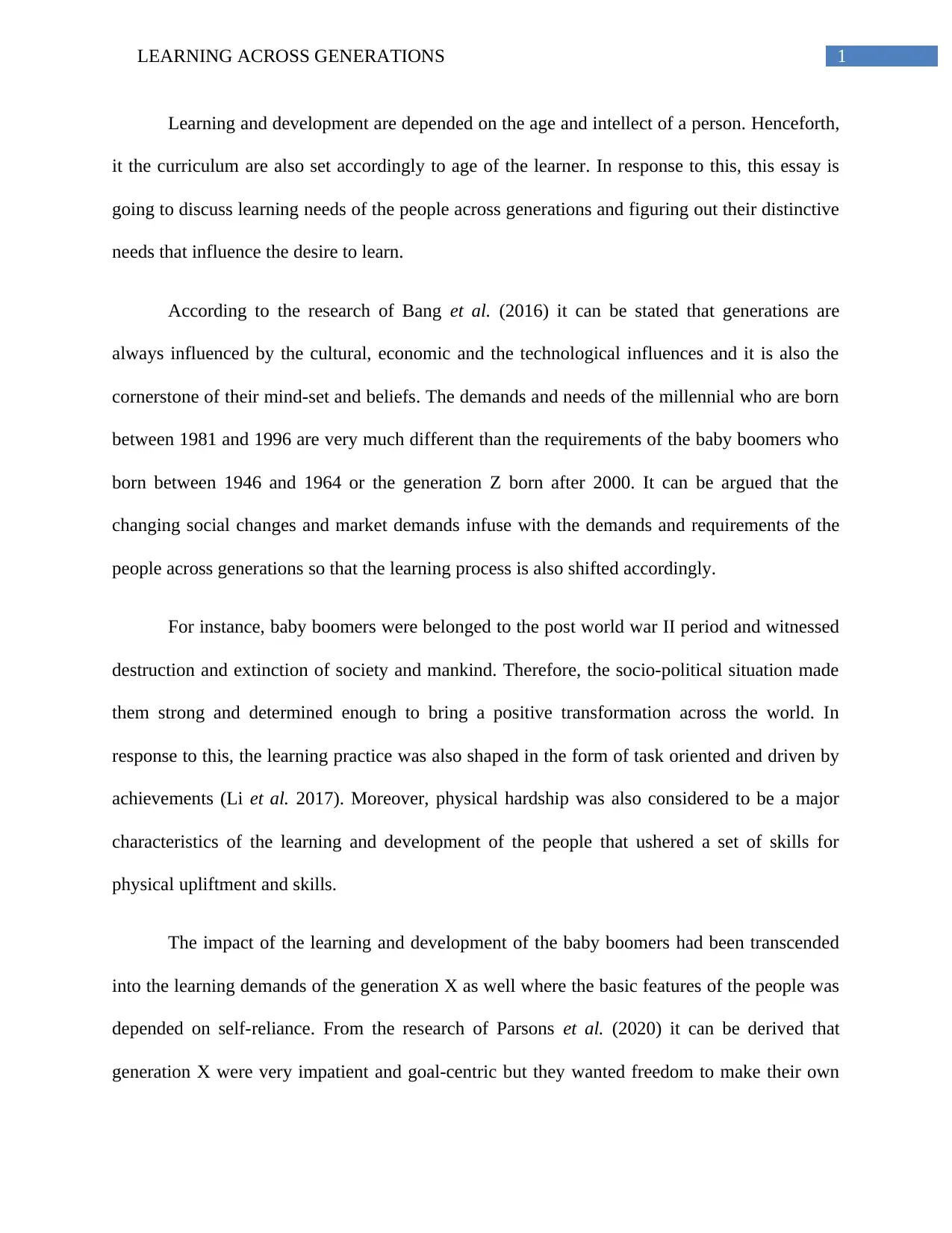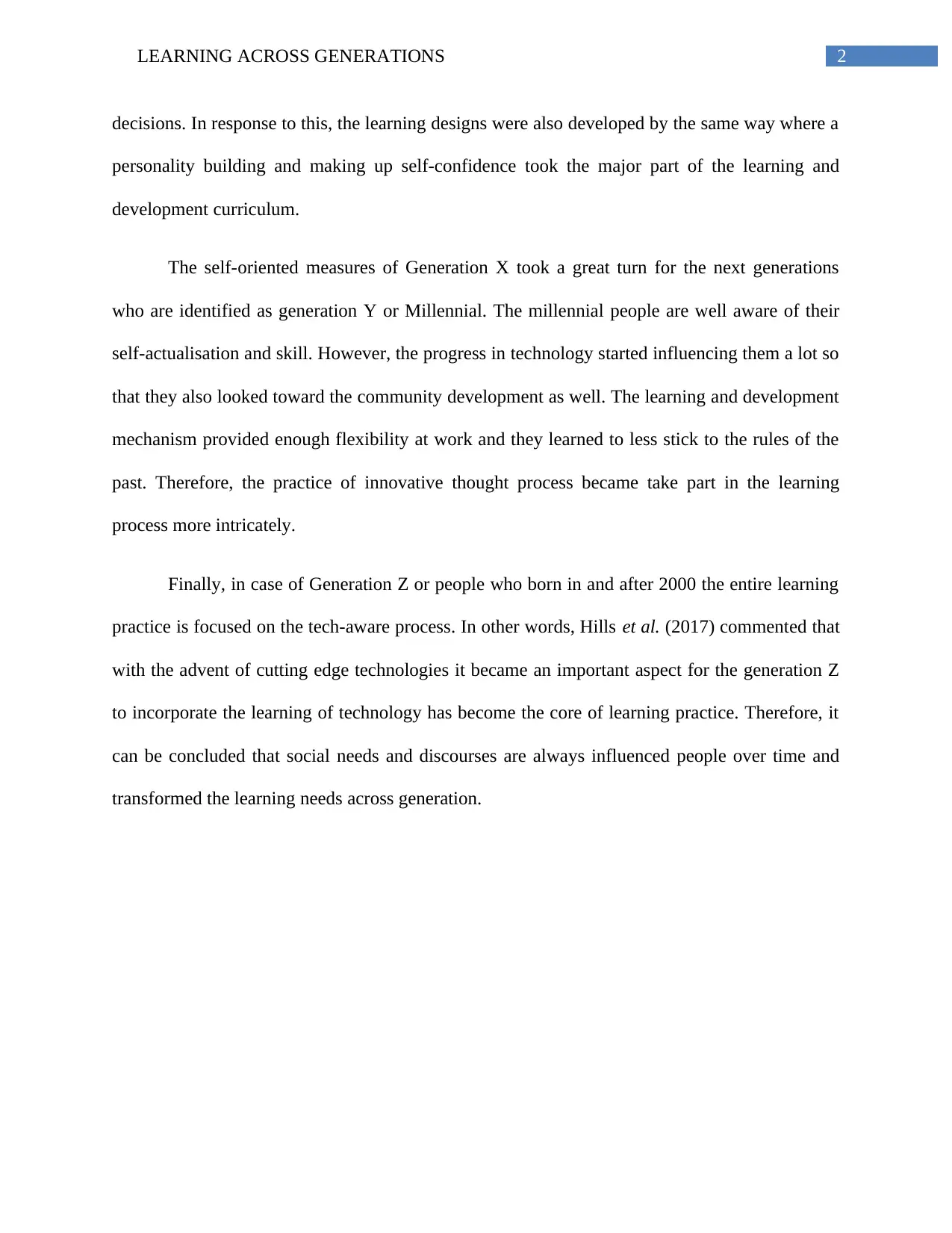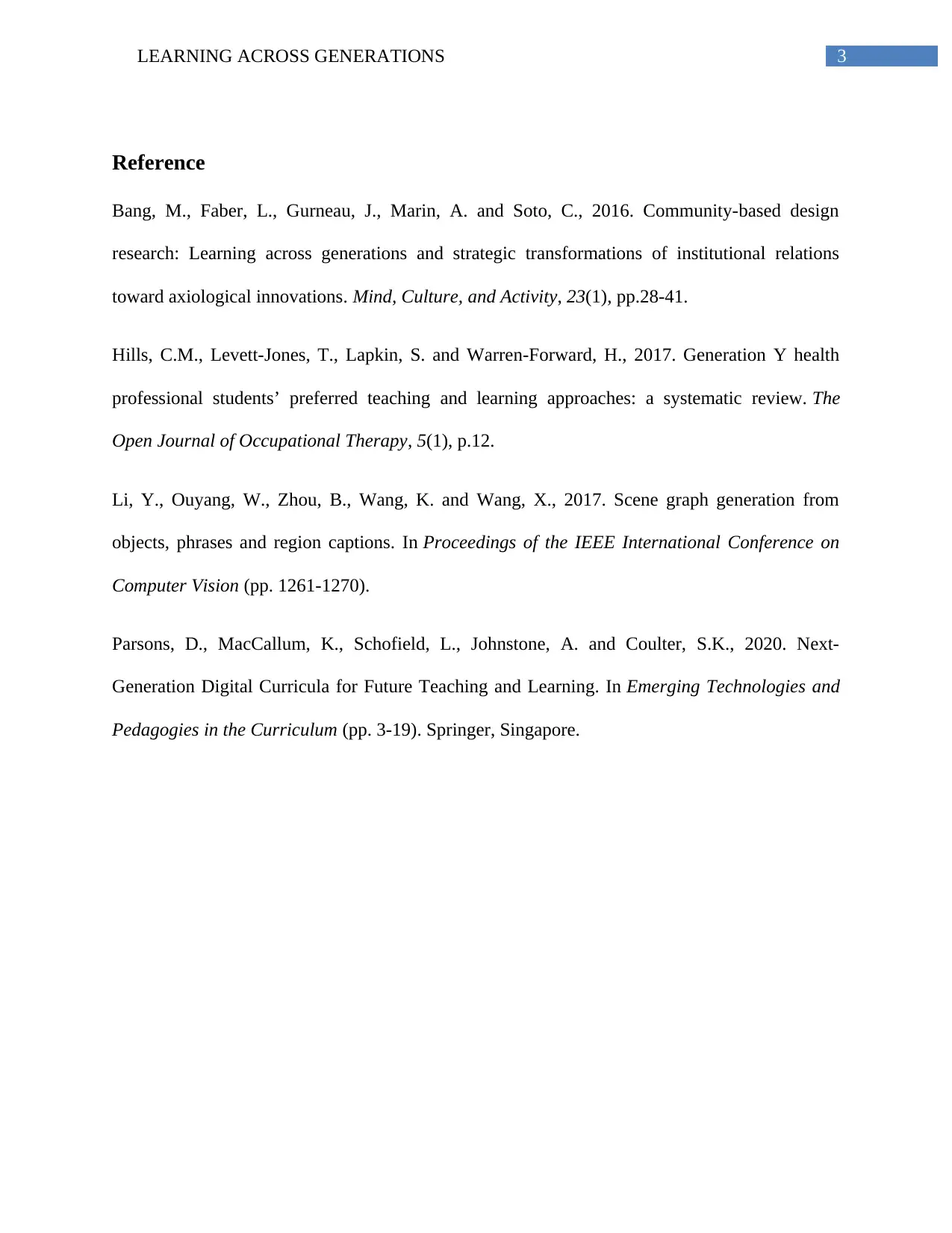Learning Needs Across Generations: A Comparative Analysis
VerifiedAdded on 2022/08/15
|4
|800
|140
Essay
AI Summary
This essay critically analyzes the learning needs of different generations, including Baby Boomers, Generation X, Millennials, and Generation Z, highlighting how cultural, economic, and technological influences shape their mindsets and learning preferences. It examines the shift in learning practices from task-oriented approaches in the Baby Boomer era to self-reliance in Generation X and the increasing emphasis on community development and flexibility in the Millennial generation. The essay also explores the impact of technology on Generation Z's learning needs. The essay references research by Bang et al. (2016), Li et al. (2017), Parsons et al. (2020), and Hills et al. (2017) to support its arguments, demonstrating how social needs and discourses transform learning requirements across generations. The essay underscores the importance of adapting educational curricula to accommodate these diverse and evolving needs, particularly in the context of rapidly advancing digital technology.
1 out of 4











![[object Object]](/_next/static/media/star-bottom.7253800d.svg)